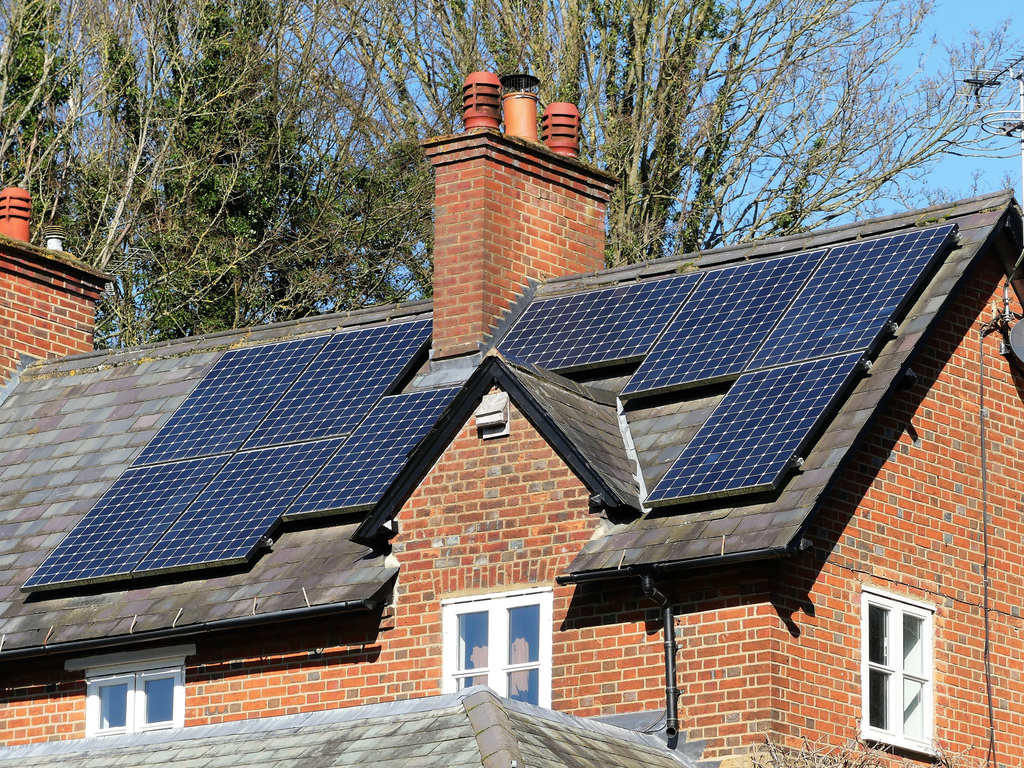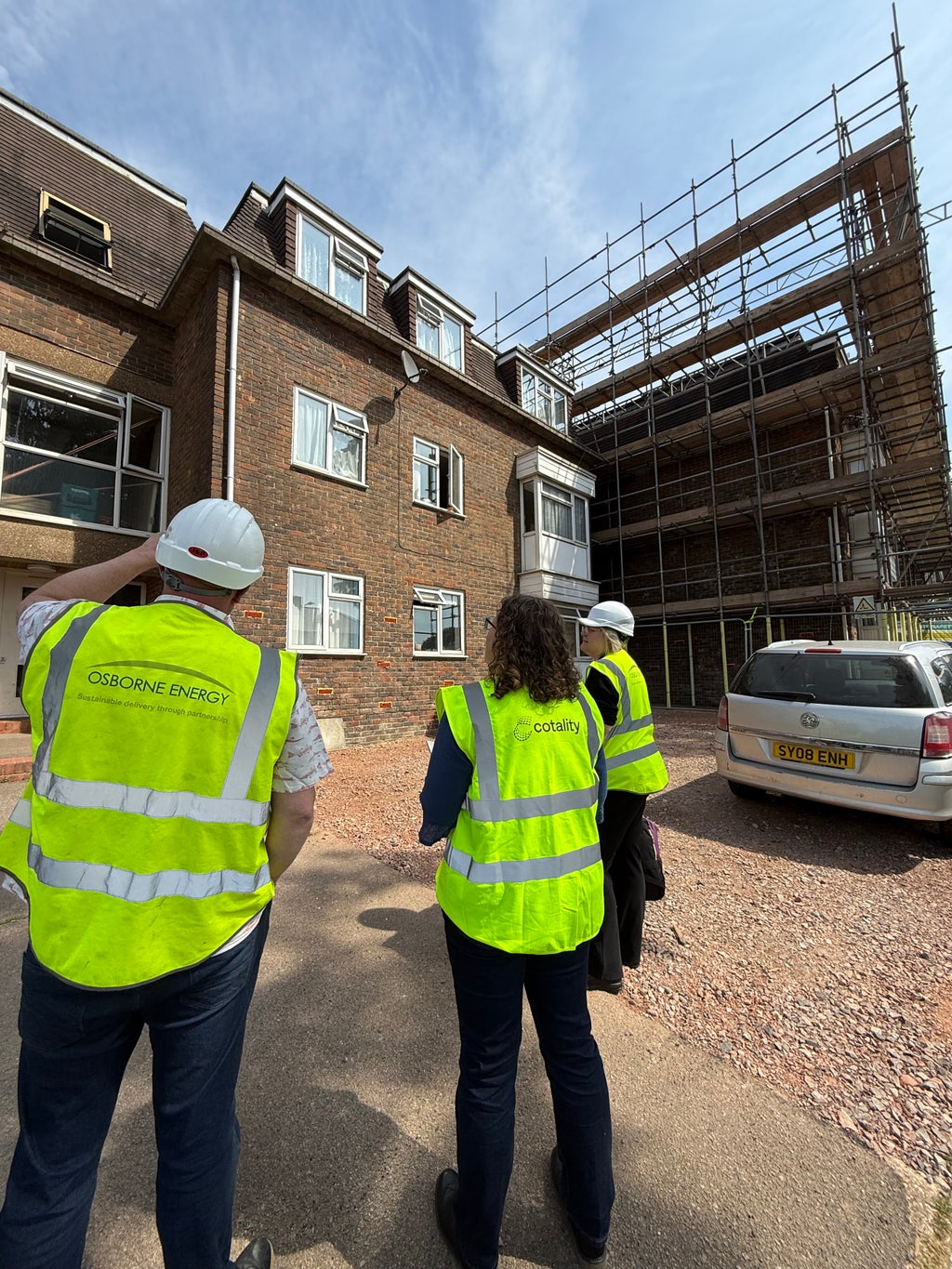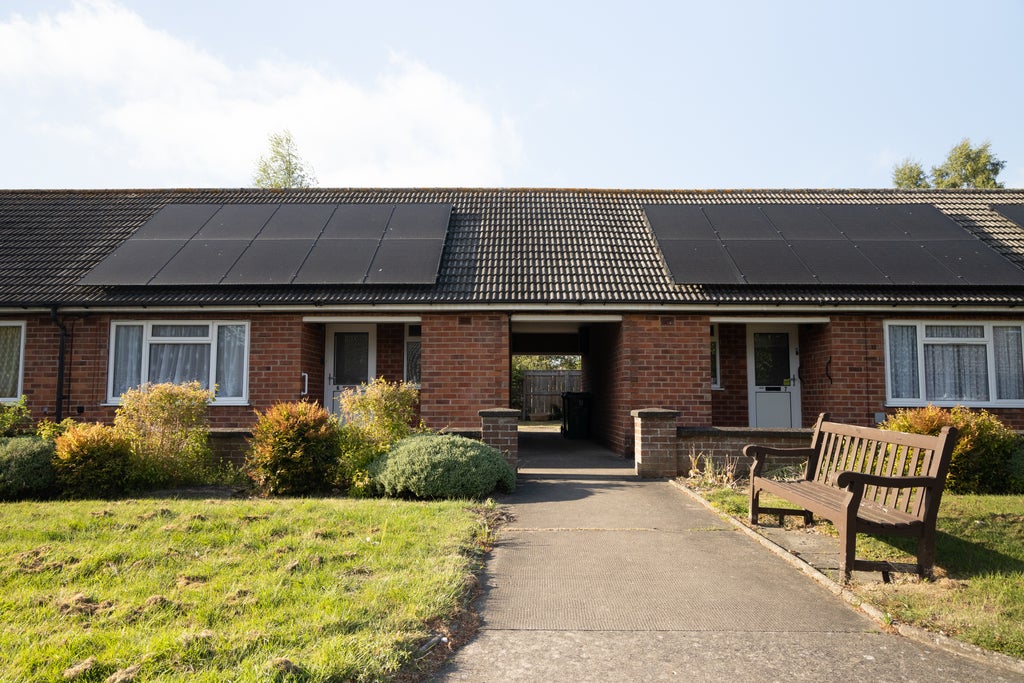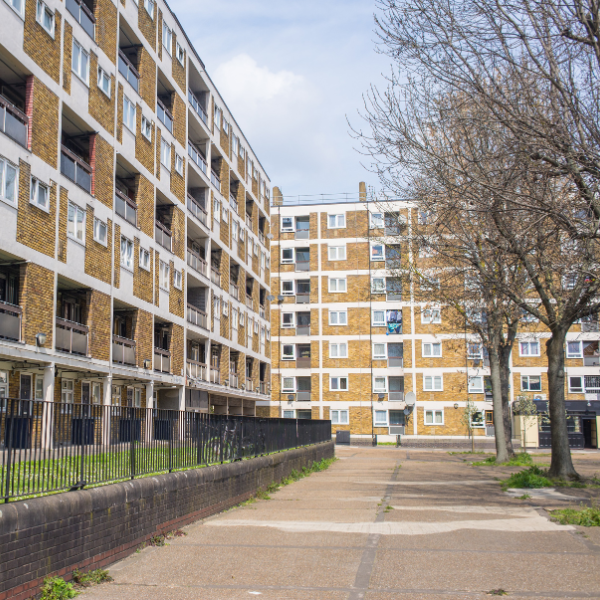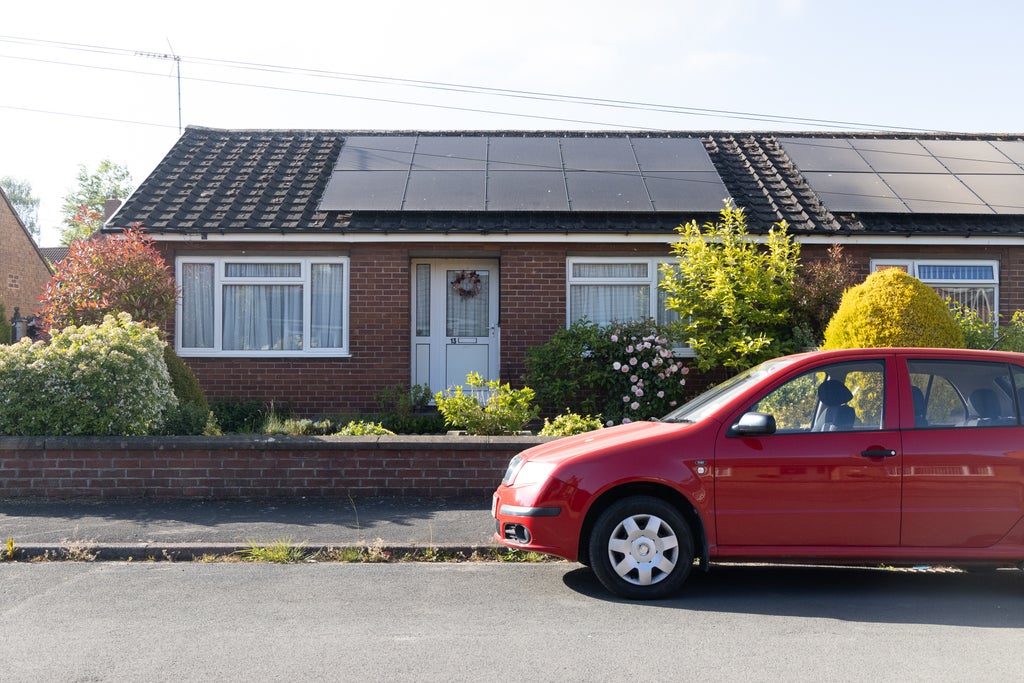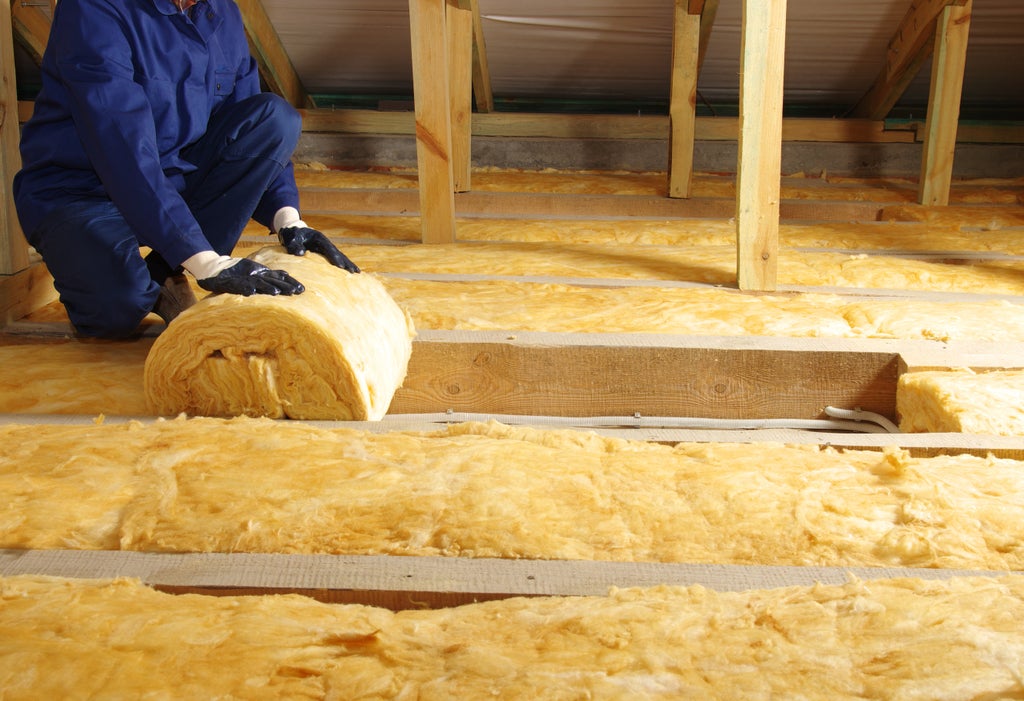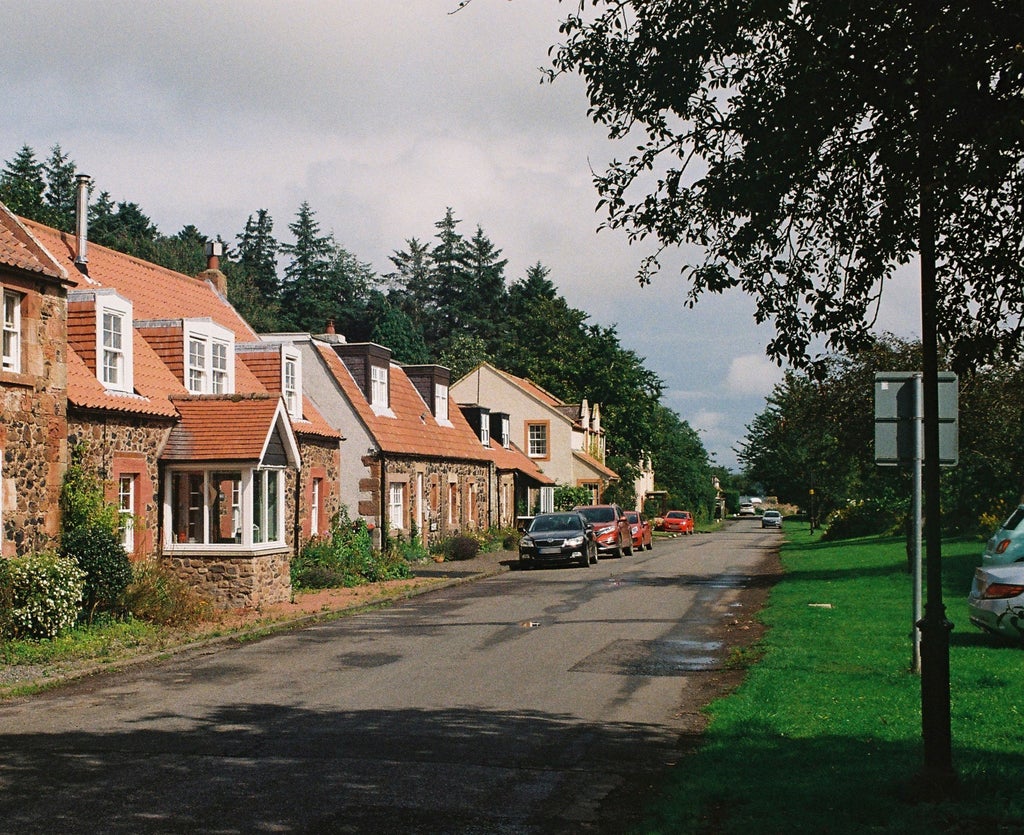Cotality is proud to see its work for Scottish Government published, providing a critical insight into how the Home Energy Model (HEM) will impact energy performance ratings and calculations for existing homes

The transition to Net Zero requires a shift in how we measure and regulate the energy efficiency of our homes. For the Scottish Government, this shift is embodied in the adoption of the new Home Energy Model (HEM) and the introduction of the Heat Retention Rating (HRR) as part of EPC reform. HEM will supersede the decades-old Standard Assessment Procedure (SAP) in 2026 with greater granularity to improve the flexibility of the model.
Cotality was commissioned to provide the data-driven analysis needed to inform this transition, to support continuity and effectiveness for homeowners, landlords, and policymakers alike. Our work focused on using robust and powerful energy modelling to inform the new HRR banding, which is one of the headline metrics planned by the Scottish Government.

The Data Challenge: Bridging the Gap from SAP to HEM
To model the impact of this transition, we built a comprehensive dataset using the 2019, 2022, and 2023 Scottish House Condition Survey (SHCS) which is weighted to allow conclusions to be drawn at the level of all homes in Scotland.
The core technical challenge lay in making the new HEM - which was still in development - speak the language of existing homes.
- Custom modelling engine: We made an amended version of our BRE-accredited RdSAP engine which took advantage of the commonalities between HEM input data and ‘full SAP’, to convert existing Reduced Data SAP (RdSAP) survey data into the full and complex data format required by the new Scottish EPC wrapper and the HEM core engine.
- Referential integrity: To ensure a reliable baseline for comparison, we were able to run both the old RdSAP and new HEM calculations on the same standardised input dataset.
- Assumptions and limitations: Given that HEM offers more modelling flexibility, it requires numerous data fields not captured in existing RdSAP or SAP surveys. We had to make informed assumptions while meeting the challenges of using a HEM wrapper still in process of development.
Key Finding: Defining the Heat Retention Rating Threshold
The Scottish Government’s policy commitment was to maintain broad equivalence between the existing SAP band C and a 'Good' HRR performance (band C or better).
Our modelling provided the evidence base to set this critical threshold:
- The Target: We aimed to find an HRR value where at least 80% of homes currently rated SAP band C would achieve the new HRR band C or better.
- The Result: The data showed that 80.34% of SAP 9.94 band C homes would retain an HRR A-C rating if the boundary between HRR bands C and D was set between 159 and 160 kWh/m2/year.
- Overall Equivalence: This threshold successfully maintains proportionality, with the overall stock achieving HRR C or better (53.35%) remaining approximately the same as under SAP 9.94 (53.87%).
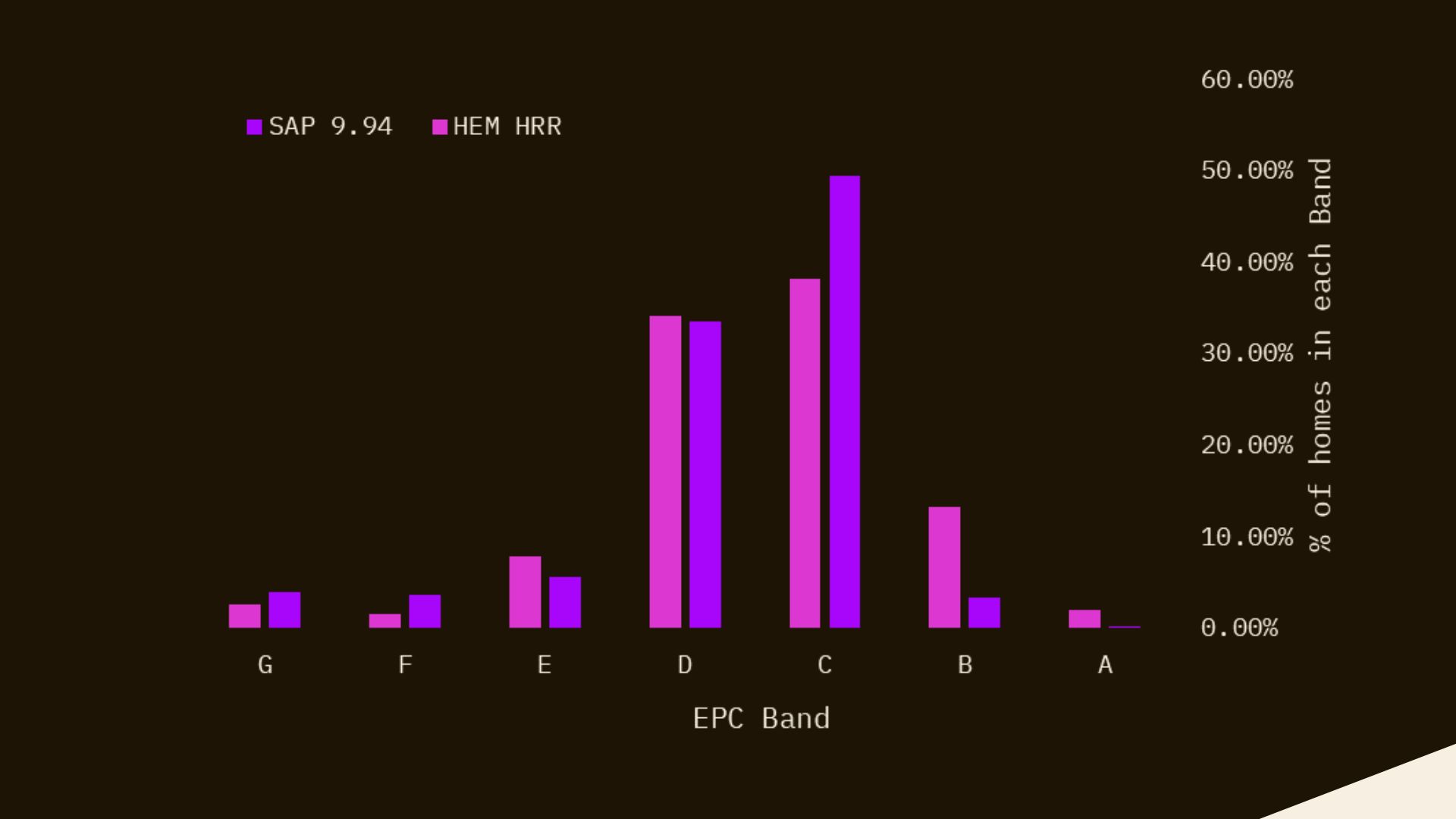
HRR Band distribution compared to SAP 9.94
The new proposed HRR banding, including the 159 kWh/m2/year threshold for Band C, results in more properties in bands A and B compared to SAP.
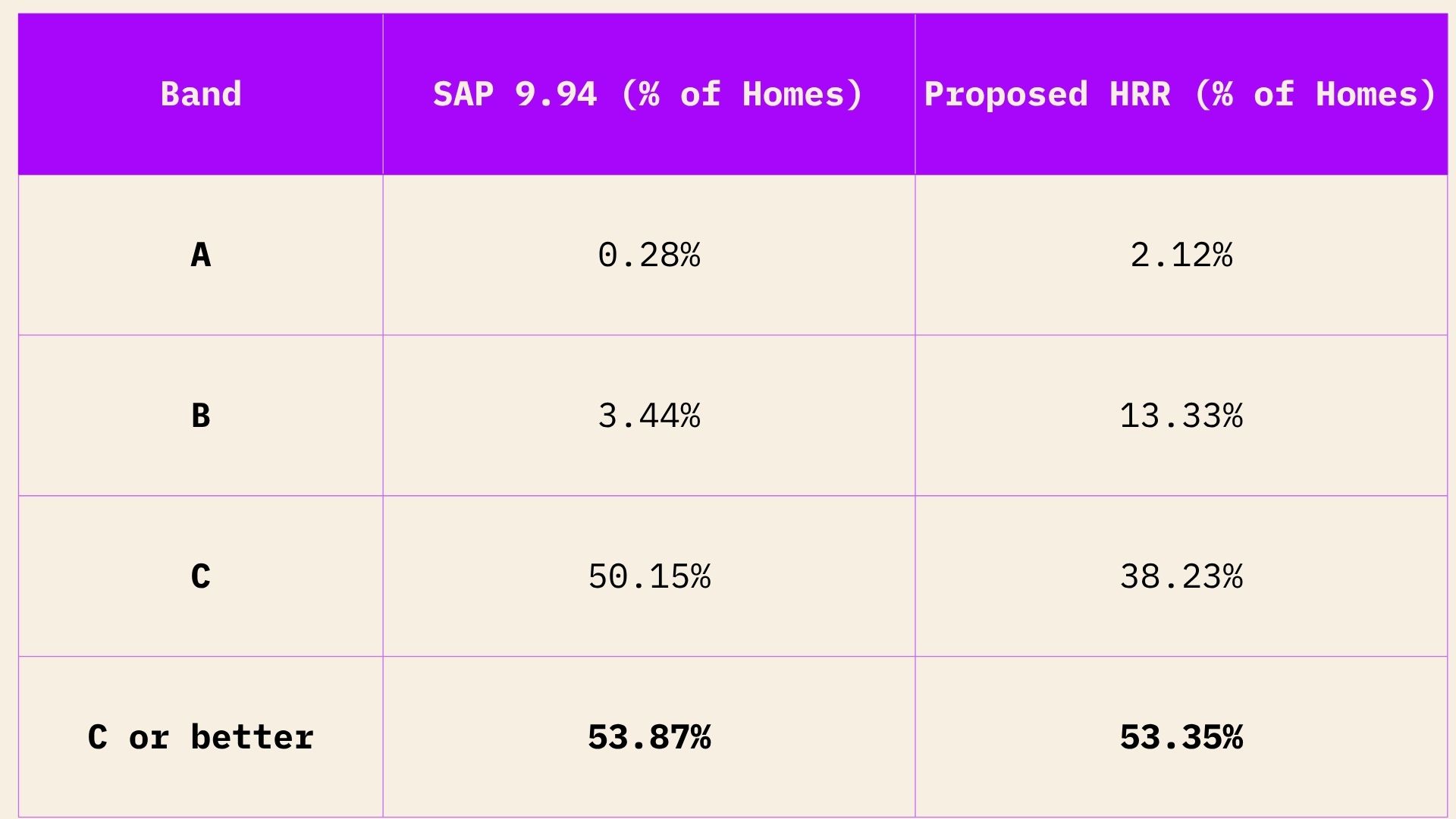
Insights: Understanding the impact of HEM for policy-making
Cotality’s detailed analysis highlights that the new HRR will maintain stability, with most (more than 80%) properties currently rated C remaining in bands A-C.
HRR focuses purely on a home's fabric efficiency so it will benefit properties with good fabric efficiency. This may disadvantage properties where a good EPC rating was based on low-cost heating or renewables that hid the impact of poor insulation, but additional metrics will provide a balanced view of the home's energy performance across fabric, heating and renewables.
Additional insights include:
- Solar PV Impact: some properties rate highly in SAP because of their PV systems will be rated less well under HRR, since PV does not affect fabric efficiency. This affects many of the properties with a current SAP A rating.
- Fabric rewarded: Conversely, about a third of SAP B rated properties jump up to HRR A, as their good fabric performance is now accurately reflected.
- HEM’s sub-ratings: The Scottish EPC wrapper also outputs results for the heating system's efficiency, cost, and emissions.
- Stock analysis: increasingly, with services like Portfolio, Pathways and Net Zero Hub, housing data is being processed by landlords, local authorities and lenders to assess their homes’ current energy performance. Good practice for the development of HEM suggests that continuity is maintained as much as possible between RdSAP and the expected reduced dataset for HEM for modelling existing homes. As with RdSAP, a robust set of assumptions will be maintained to make it possible to produce a HEM dataset from non-invasive surveys on existing homes and neutral on occupant behaviour to enable comparison of EPCs when used in the housing market.
Cotality’s work provides a robust, evidence-based foundation for the Scottish Government to implement the new EPC and its related policies, supporting the implementation of EPC reform that incorporates a focus on the fabric efficiency of Scotland's housing stock.







